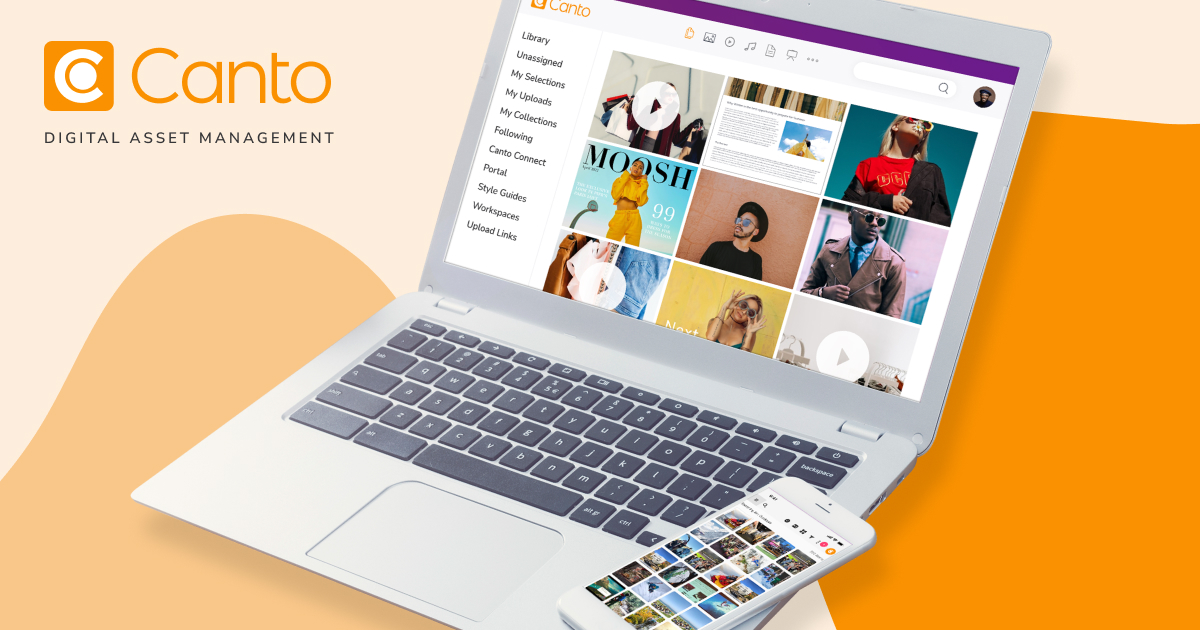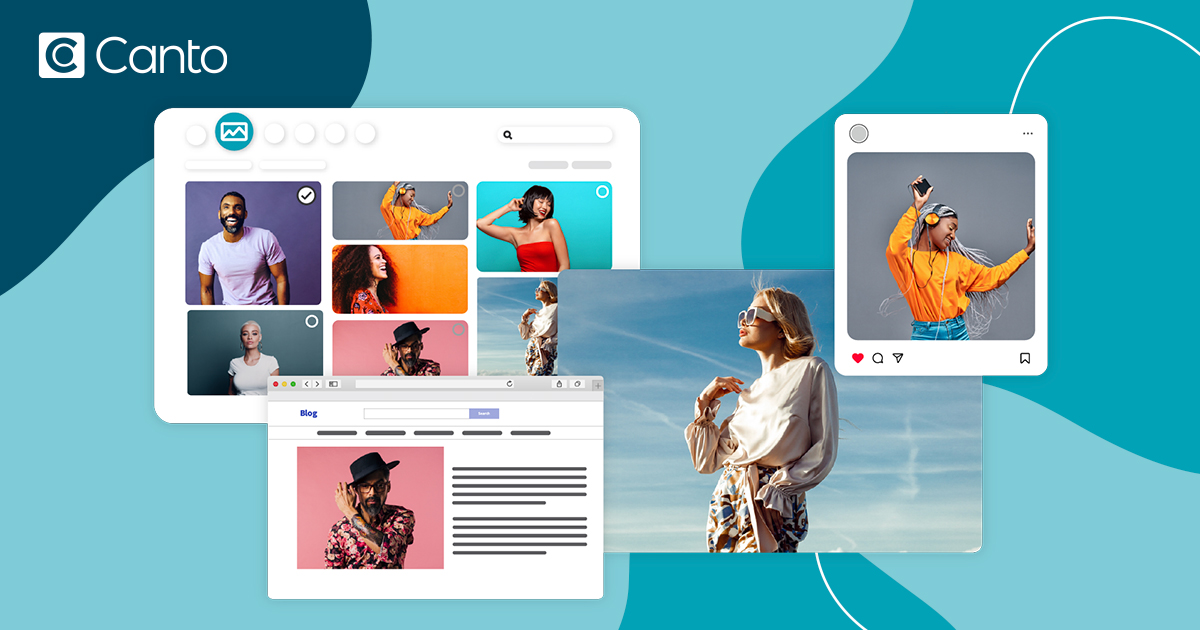
Canto Digital Asset Management: Complete Buyer's Guide
Cloud-first, AI-native platform for rapid deployment and user accessibility
Canto Digital Asset Management is a cloud-first, AI-native platform designed for rapid deployment and user accessibility in the digital asset management space. With 30+ years in the DAM market and 3,000+ global clients [135][140][145], Canto has established itself as a mid-market focused solution that prioritizes streamlined asset management without enterprise-grade complexity.
Market Position & Maturity
Market Standing
Canto occupies a distinctive mid-market position in the digital asset management landscape, with 30+ years of market presence and 3,000+ global clients providing substantial operational maturity evidence [135][140][145].
Company Maturity
The platform's absence from the Gartner Magic Quadrant [130][142] reflects analyst focus on scalability-oriented vendors rather than usability-focused solutions, which may actually benefit mid-market organizations seeking straightforward DAM capabilities.
Growth Trajectory
Operational scale evidence includes successful enterprise implementations like Siemens Healthineers and the University of Wyoming managing 15,000+ assets across 600+ users [141].
Industry Recognition
While competitors like Aprimo earned Gartner Magic Quadrant Leader status for 2025 [130][142], Canto's strategy targets organizations where rapid deployment and user accessibility outweigh enterprise complexity requirements.
Strategic Partnerships
Strategic partnerships and ecosystem positioning remain less prominent compared to enterprise vendors with extensive MarTech integrations, reflecting Canto's focus on standalone DAM capabilities rather than comprehensive marketing technology ecosystem integration.
Longevity Assessment
Long-term viability indicators include consistent customer growth and premium packages with performance guarantees like '50% faster asset retrieval within 90 days' backed by optimization commitments [145].
Proof of Capabilities
Customer Evidence
Siemens Healthineers achieved $3.5M in operational savings through automated metadata tagging, providing enterprise-scale validation of the platform's business impact potential [134].
Quantified Outcomes
Performance validation shows AI Visual Search cutting asset retrieval time by 40%, reducing typical weekly searches from 5.3 hours to 1.2 hours [134].
Case Study Analysis
The University of Wyoming scaled to 600+ users managing 15,000+ assets, achieving a 90% reduction in image-request emails and accelerated project timelines [141].
Market Validation
Market validation evidence includes brands using AI-driven DAM reporting 25% higher asset reuse rates and 30% reduced content recreation costs [134].
Competitive Wins
Competitive validation includes customer migrations from legacy DAM systems due to AI search deficiencies, with 45% of enterprises migrating for improved search capabilities [145].
Reference Customers
Reference customer evidence spans multiple industries including healthcare (Siemens Healthineers), education (University of Wyoming), and automotive (Lucid Motors), demonstrating platform versatility across different organizational types and asset management requirements.
AI Technology
Canto's technical foundation centers on cloud-first, AI-native architecture designed for accessibility and rapid deployment rather than enterprise-grade complexity. The platform's core AI technology leverages natural language processing for Visual Search capabilities [134][135].
Architecture
Architecture deployment follows managed SaaS models with cloud storage at $0.023/GB/month [142], eliminating infrastructure management requirements for mid-market organizations.
Primary Competitors
Against Aprimo, Canto offers faster implementation and more intuitive user experience but lacks Aprimo's Gartner Magic Quadrant Leader recognition [130][142]. Compared to Adobe Experience Manager Assets, Canto provides simpler deployment and lower complexity but cannot match Adobe's ecosystem integration or advanced AI features.
Competitive Advantages
Competitive advantages center on rapid deployment, natural language search superiority over keyword-based approaches [134][135], and pricing accessibility for mid-market budgets.
Market Positioning
Canto's absence from the Gartner Magic Quadrant [130][142] reflects analyst focus on scalability-oriented vendors rather than usability-focused solutions, which may actually benefit mid-market organizations seeking straightforward DAM capabilities without enterprise complexity.
Win/Loss Scenarios
Win/loss scenarios favor Canto when organizations prioritize deployment speed, user adoption, and cost accessibility over technical sophistication.
Key Features

Pros & Cons
Use Cases
Pricing
Featured In Articles
Comprehensive analysis of AI Brand Asset Management for AI Marketing & Advertising for AI Marketing & Advertising professionals. Expert evaluation of features, pricing, and implementation.
How We Researched This Guide
About This Guide: This comprehensive analysis is based on extensive competitive intelligence and real-world implementation data from leading AI vendors. StayModern updates this guide quarterly to reflect market developments and vendor performance changes.
145+ verified sources per analysis including official documentation, customer reviews, analyst reports, and industry publications.
- • Vendor documentation & whitepapers
- • Customer testimonials & case studies
- • Third-party analyst assessments
- • Industry benchmarking reports
Standardized assessment framework across 8 key dimensions for objective comparison.
- • Technology capabilities & architecture
- • Market position & customer evidence
- • Implementation experience & support
- • Pricing value & competitive position
Research is refreshed every 90 days to capture market changes and new vendor capabilities.
- • New product releases & features
- • Market positioning changes
- • Customer feedback integration
- • Competitive landscape shifts
Every claim is source-linked with direct citations to original materials for verification.
- • Clickable citation links
- • Original source attribution
- • Date stamps for currency
- • Quality score validation
Analysis follows systematic research protocols with consistent evaluation frameworks.
- • Standardized assessment criteria
- • Multi-source verification process
- • Consistent evaluation methodology
- • Quality assurance protocols
Buyer-focused analysis with transparent methodology and factual accuracy commitment.
- • Objective comparative analysis
- • Transparent research methodology
- • Factual accuracy commitment
- • Continuous quality improvement
Quality Commitment: If you find any inaccuracies in our analysis on this page, please contact us at research@staymodern.ai. We're committed to maintaining the highest standards of research integrity and will investigate and correct any issues promptly.